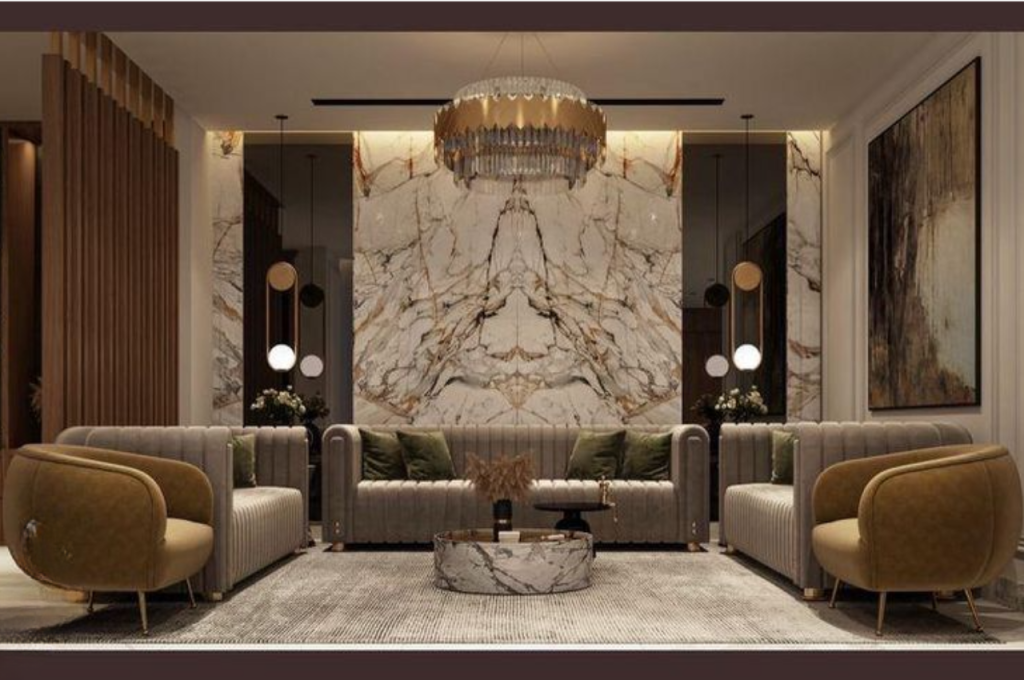The highest degree in interior design is a Master’s Degree in Interior Design. This degree program provides students with an advanced level of knowledge and skills to excel in the interior design industry.
With this qualification, individuals can gain a competitive advantage over their peers and pursue leadership roles in the field. The curriculum typically covers topics such as design theory, history of interior design, sustainable design practices, technical drawing, and project management.
Additionally, students will learn about building codes, materials, and industry standards. A Master’s Degree in Interior Design can be pursued both on-campus and online, with some programs offering flexible schedules for working professionals. Overall, this degree program sets the foundation for a successful and fulfilling career in interior design.
Career in Interior Design
Interior design is the art and science of creating aesthetically pleasing and functional indoor spaces. Interior design is an exciting and dynamic field that combines art, science, and technology. With the rise of real estate development, the demand for interior designers has increased significantly. Interior designers work with clients to create beautiful and functional spaces that meet their specific needs and requirements.

Educational Requirements
To become an interior designer, you’ll need at least a bachelor’s degree in interior design or a related field. Some schools also offer master’s degree programs in interior design. During your studies, you’ll learn about design theory, construction techniques, design software, and various aspects of design. A strong background in mathematics, physics, and project management can also help me pursue a job in interior design.
Professional Certifications
Obtaining a certification is an excellent way to enhance your professional credibility in the interior design industry. The most well-known and respected certification for interior designers is the National Council for Interior Design Qualification (NCIDQ) certification. To earn the NCIDQ certification, you must have a bachelor’s degree in interior design or a related field, pass an exam, and have at least two years of work experience under a licensed interior designer. Other certifications include Certified Interior Designer (CID) and Leadership in Energy and Environmental Design (LEED).
Salary and Job Outlook
According to the Bureau of Labor Statistics, the median annual salary for interior designers in 2020 was $57,040, with the highest 10 percent earning more than $96,470. Job growth in the industry is projected to be 4 percent from 2019 to 2029, about as fast as the average for all occupations.
Different Degrees in Interior Design
Interior design degrees range from an Associate’s degree to a Master’s degree. The highest degree in interior design is a Master’s of Fine Arts in Interior Design or a Master’s of Interior Architecture degree. These degrees can help you to enhance your design skills and contribute to the growth of your career.
Interior design is a field that focuses on creating functional and aesthetically pleasing spaces. It involves an understanding of color, space, lighting, and materials, among other things. A degree in interior design can equip you with the necessary skills to work in a variety of settings, from residential to commercial spaces. In this blog post, we will explore the different degrees available in interior design.
Associate Degree
An associate degree in interior design is a two-year program that provides students with a broad overview of the field. It covers topics such as design theory, drafting, space planning, and building codes. This degree prepares students for entry-level positions in the field, such as design assistants or draftsmen.
Bachelor’s Degree
A bachelor’s degree in interior design is a four-year program that builds upon the knowledge gained in an associate degree program. In this program, students learn about the design process, project management, and sustainability. Additionally, they gain experience in industry-standard software and technology. This degree prepares students for a range of positions, from junior designers to project managers.
Master’s Degree
A master’s degree in interior design is an advanced program that takes approximately two years to complete. In this program, students engage in advanced research and design projects. They explore topics such as lighting design, building systems, and environmental psychology. This degree prepares students for leadership positions in the field, such as design directors or consultants.
In addition to these three degrees, many programs offer specialized degrees in areas such as lighting design or sustainable design. With a degree in interior design, you can pursue a rewarding career in a variety of fields. Whether you are interested in residential design or commercial spaces, there is a degree program that can equip you with the skills necessary to succeed.
Exploring Master’s Degree in Interior Design
A Master’s Degree in Interior Design is the highest academic achievement in the field. Pursuing this degree advances one’s career by expanding knowledge and practical, creative skills in interior design and architecture. It sets one apart with a distinguished portfolio and a competitive edge in the industry.
Interior design is much more than just decorating a room. It involves a combination of art, science, and business to create functional and appealing spaces. Pursuing a master’s degree in interior design can help individuals advance their careers in this field and gain expertise in specialized areas of design. In this article, we will explore the master’s degree program in interior design, its coursework, and specializations to provide a comprehensive overview of what the program entails.
Program Overview
A master’s degree program in interior design is designed to provide students with an in-depth understanding of various aspects of interior design, including design theory, construction management, sustainable design practices, and computer-aided design (CAD) programs. The program typically takes two years to complete and requires students to conduct independent research and complete a thesis or capstone project to demonstrate their proficiency in the field.
Coursework
The coursework for a master’s degree in interior design may vary depending on the university and the specialization. However, it typically includes core courses in interior design theory, architectural detailing, lighting design, and design research methods. In addition, students may have the opportunity to take elective courses in areas such as digital design, furniture design, and historic preservation. Some examples of the courses that students may take include:
- Design Theory and Criticism
- Interior Systems and Construction Materials
- Advanced CAD for Interior Design
- Professional Practice and Ethics
- Sustainability in Interior Design
Specializations
A master’s degree in interior design offers several specializations that students can choose based on their interests and career goals. Some popular specializations include:
- Healthcare Design
- Lighting Design
- Environmental Design
- Residential Design
- Commercial Design
Specializations allow students to dive deeper into a specific area of interior design and develop advanced skills and knowledge that can help them specialize in their chosen field.
Benefits of Pursuing A Master’s Degree in Interior Design
If you want to excel in the field of interior design, obtaining a master’s degree in the subject can open up a world of possibilities. A master’s degree in interior design can help you become a specialist in your area of interest, allowing you to achieve both personal and professional growth. Let’s delve into some of the biggest benefits of pursuing a master’s degree in interior design.

Career Opportunities
After completing a master’s degree in interior design, you will have access to a wide array of career opportunities. With a master’s degree in interior design, you can pursue job roles such as senior designer, design director, or design consultant. A master’s degree will enable you to stand out from the crowd and grab the attention of potential employers. You may also find opportunities to teach and mentor others in your company or start your design firm.
Higher Salaries
A degree in interior design alone may not earn you a high salary, but a master’s degree can help you cross the salary threshold and qualify for higher-paying jobs. Salaries for interior designers may vary depending on the job location, experience, and skills. The Bureau of Labor Statistics reports that the median salary for interior designers in 2020 was $56,040 annually. However, with a master’s degree, you could find yourself in a higher earning bracket, making much more. A higher degree can be your key to an exciting career and a higher salary.
Professional Growth
Interior design is undoubtedly an evolving field, and there’s always something new to learn. With a master’s degree in interior design, you’ll have access to more in-depth material, advanced techniques, innovations in the industry, and practical skills. You’ll be a step ahead of others in the field and can hone your skills in your area of expertise. A master’s degree can also open pathways to research and publications in the field, enhancing your professional growth and credibility. Additionally, a master’s program in interior design equips you with valuable leadership skills, setting you up to grow professionally in the industry.
Application and Admission
The highest degree in Interior Design is a Master of Fine Arts (MFA) or a Master of Arts (MA). To apply and be admitted to a graduate program, students typically need a bachelor’s degree from an accredited institution, a portfolio of their work, and strong recommendation letters.
Applying for the highest degree in Interior Design requires thorough research and preparation. Aspiring students need to understand the admission requirements, the application process, and the various documents they need to submit for consideration.
Admission Requirements
The admission requirements vary between universities and colleges offering the highest degree in Interior Design. However, the following are some common prerequisites that students will need to meet:
- A bachelor’s degree in Interior Design or a related field
- A minimum cumulative GPA of 3.0
- A portfolio showcasing their work and skills in Interior Design
- Letters of recommendation from academic and professional sources
- A statement of purpose outlining their educational and career goals in Interior Design
- A resume highlighting their relevant experience, accomplishments, and skills
Application Process
The application process for the highest degree in Interior Design typically involves the following steps:
- Research and shortlist colleges or universities that offer the program.
- Review the admission requirements for each institution and ensure that you meet them.
- Submit an online application on the institution’s website.
- Pay the application fee (if applicable) and upload the required documents such as transcripts, statement of purpose, resume, and portfolio.
- Track the status of your application and ensure that you meet all the deadlines.
- Prepare for the interviews and/or portfolio reviews (if required) by the institutions to assess your skills and suitability for the program.
- Receive the admissions decision from the institutions and select the one that best suits your academic and career aspirations.
Financing A Master’s Degree in Interior Design
If you are considering pursuing a master’s degree in interior design, you may be wondering about the financial aspect of this decision. While a master’s degree can lead to increased earning potential and career opportunities, it can also come with a hefty price tag. Fortunately, there are several financing options available to help make your dream of obtaining a master’s degree in interior design a reality.

Scholarships and Grants
Scholarships and grants are a great way to finance your master’s degree in interior design without accumulating debt. These financial awards are typically merit-based and do not require repayment, making them an attractive option for prospective students. Some scholarships and grants are specifically geared toward students pursuing a degree in interior design. The American Society of Interior Designers and the National Kitchen and Bath Association are just two examples of organizations that offer scholarships to interior design students. Additionally, many universities offer institutional scholarships and grants that students may apply for.
Loans
If scholarships and grants are not enough to cover the cost of your master’s degree in interior design, you may need to consider taking out a loan. There are several types of loans available to graduate students, including federal loans and private loans. Federal loans, such as the Direct Unsubsidized Loan and the Grad PLUS Loan, are offered by the government and typically have lower interest rates and more favorable repayment terms than private loans. Private loans may have higher interest rates but may also offer more flexibility in terms of borrowing limits and repayment options.
| Loan Type | Interest Rate | Borrowing Limits | Repayment Terms |
| Direct Unsubsidized Loan | 4.30% | Up to $20,500 per academic year | 10 years |
| Grad PLUS Loan | 5.30% | Up to the cost of attendance minus other financial aid received | 10-25 years |
| Private Loan | Varies by lender | Varies by lender | Varies by lender |
Before taking out any loans, be sure to research your options and carefully consider your ability to repay the debt.
Overall, financing your master’s degree in interior design may require a combination of scholarships, grants, and loans. By exploring all available options and planning, you can make your dream of earning a master’s degree in interior design a reality.
Conclusion
As we come to the end of our exploration, it’s clear that the highest degree in interior design is a Doctor of Philosophy (Ph. D. ) in Architecture or Interior Design. Though it is not the only path to success in the industry, this advanced degree can provide unique opportunities and expertise.
Whatever path you choose, remember that there is no one route to success in interior design and that passion, dedication, and hard work are what truly make a designer stand out.

